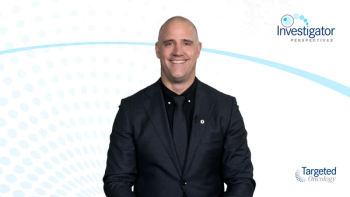
Should ESR1 Variant Allele Fraction Influence Clinical Decision-Making?
Panelists discuss that, based on EMERALD trial data, elacestrant provides consistent clinical benefit in metastatic breast cancer regardless of ESR1 mutation allele frequency, supporting the use of any detectable ESR1 mutation—regardless of variant allele frequency (VAF)—as a valid criterion for treatment selection.
Episodes in this series

The detection of ESR1 mutations through circulating tumor DNA (ctDNA) testing has become increasingly common, especially with broader adoption of liquid biopsies in metastatic breast cancer. A recurring question among clinicians is whether the variant allele frequency (VAF)VAF—essentially, the proportion of DNA in the blood carrying the mutation—should influence treatment decisions with agents like such as elacestrant. Given that VAFs can vary widely, from less than 0.5% to well over 10%, it’s natural to wonder if a low VAF might reflect a subclonal or less impactful mutation, potentially diminishing the expected drug response.
Recent analyses from the EMERALD study have provided clarity. A dedicated subset analysis stratified patients by VAF into “low” (under 1.2%) and “high” (1.2% or greater) groups. Across both categories, elacestrant demonstrated a consistent clinical benefit over standard endocrine monotherapy, with median progression-free survival of approximately 8.6 months for low VAF and 9 months for high VAF. The hazard ratios remained strongly in favor of elacestrant in both groups, suggesting that the level of VAF did not meaningfully impact drug efficacy.
This consistency in treatment benefit supports the idea that any detectable ESR1 mutation—regardless of its allele frequency—is clinically relevant and actionable. While VAF data can be psychologically tempting to overinterpret, especially when very low, the current evidence does not support using VAF as a deciding factor in therapy selection. As such, the presence of an ESR1 mutation alone remains the guiding criterion for elacestrant use, rather than its measured proportion in ctDNA assays.








































